Internet of things: Opportunities Unlimited
Sakshi Education
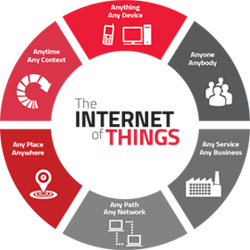
What is the IoT (Internet of Things)?
The buzzword IoT is in such a large scale that we can say IoT is the 3rd industrial revolution.
The “Internet of things” (IoT) is becoming an increasingly growing topic of conversation both in the workplace and outside of it. It’s a concept that not only has the potential to impact how we live but also how we work. But what exactly is the “Internet of things” and what impact is it going to have on you if any? There are a lot of complexities around the “Internet of things” but I want to stick to the basics.
Connecting any device with an on and off switch to the Internet (and/or to each other) - this includes everything from cell phones, coffee makers, washing machines, headphones, lamps, wearable devices and almost anything else you can think of. This also applies to components of machines, for example, a jet engine of an airplane or the drill of an oil rig. If it has an on and off switch, then chances are it can be a part of the IoT.
How does this impact you?
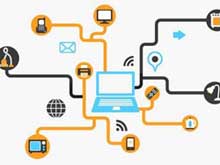 Imagine a day with IoT, the Internet of Things could allow you to wake up and experience the "ideal" day. You'd wake up in the morning to an alarm clock.The alarm clock tracked to see how long it would take you to get ready and even checked to see what the activities are today.
Imagine a day with IoT, the Internet of Things could allow you to wake up and experience the "ideal" day. You'd wake up in the morning to an alarm clock.The alarm clock tracked to see how long it would take you to get ready and even checked to see what the activities are today.
Your home heater would have been turned on 30 minutes before, so it could warm your bathroom. While taking a bath, your milk is getting ready with the right temperature when you come out of bath, in the mean time, your car is automatically wiping out the windshield when you are getting ready and you will get an intimate that you'll still need to leave the house five minutes early because of traffic conditions.
Your coffee machine at work could brew a cup before you arrive, for instance, or your laundry at home could start to wash and then dry around lunchtime, you planned a movie in the evening and the mobile phone will let you know the right time to leave from the office with respect to the traffic conditions, while you were travelling home you have to pick up something from a grocery store and you will get an intimation that whether the item is available in your nearest grocery store or not, and it will also give you the available parking space with the shortest route map for your destination.
AC in your home will automatically start before you arrive to get the desired temperature you wish for, your family can track your safety and your time of arrival.All of these connected devices are being handled by automatic systems over a wireless network. The result… you have a smart home, thanks to smart appliances, as well as a smart car and a smart office. In a nutshell: you have asmart life. Say hello to the Internet of Things.
Who coined Internet of Things?
 Kevin Ashton supposedly coined the phrase "Internet of Things" while working for Procter & Gamble in 1999. He later co-founded the Auto-ID Center at the Massachusetts Institute of Technology. Ashton talked in depth about IoT to the RFIDJournal.com in 2009.
Kevin Ashton supposedly coined the phrase "Internet of Things" while working for Procter & Gamble in 1999. He later co-founded the Auto-ID Center at the Massachusetts Institute of Technology. Ashton talked in depth about IoT to the RFIDJournal.com in 2009.
The concept of a network of smart devices was discussed as early as 1982, with a modified Coke machine at Carnegie Mellon University becoming the first internet-connected appliance, able to report its inventory and whether newly loaded drinks were cold or not.
There are more things on internet than the people on the internet.
According to Gartner, Inc. (a technology research and advisory corporation), there will be nearly 26 billion devices on the Internet of Things by 2020. ABI Research estimates that more than 30 billion devices will be wirelessly connected to the Internet of Things by 2020.
Gartner estimates that IoT product and service suppliers will generate incremental revenue exceeding 300billionin2020.IDCforecaststhattheworldwidemarketforIoTsolutionswillgrowto7.1 trillion in 2020.
Power companies read meters through tele-metering systems instead of visiting houses; doctors remotely monitor the conditions of their patients 24/7 by having the patients use devices at home instead of requiring the patients to stay at hospital; vehicle-mounted terminals automatically display the nearest parking space; sensors in smart homes turn off utilities, close windows, monitor security, and report to homeowners in real time.This is not a robo, i-robot or starwars movie yes these are scenarios that only existed in science fiction previously, with the coming age of the Internet of Things, however, they are becoming a reality.
How Does IoT Work?
Internet of Things involves three distinct stages:
The buzzword IoT is in such a large scale that we can say IoT is the 3rd industrial revolution.
The “Internet of things” (IoT) is becoming an increasingly growing topic of conversation both in the workplace and outside of it. It’s a concept that not only has the potential to impact how we live but also how we work. But what exactly is the “Internet of things” and what impact is it going to have on you if any? There are a lot of complexities around the “Internet of things” but I want to stick to the basics.
Connecting any device with an on and off switch to the Internet (and/or to each other) - this includes everything from cell phones, coffee makers, washing machines, headphones, lamps, wearable devices and almost anything else you can think of. This also applies to components of machines, for example, a jet engine of an airplane or the drill of an oil rig. If it has an on and off switch, then chances are it can be a part of the IoT.
How does this impact you?
 Imagine a day with IoT, the Internet of Things could allow you to wake up and experience the "ideal" day. You'd wake up in the morning to an alarm clock.The alarm clock tracked to see how long it would take you to get ready and even checked to see what the activities are today.
Imagine a day with IoT, the Internet of Things could allow you to wake up and experience the "ideal" day. You'd wake up in the morning to an alarm clock.The alarm clock tracked to see how long it would take you to get ready and even checked to see what the activities are today.Your home heater would have been turned on 30 minutes before, so it could warm your bathroom. While taking a bath, your milk is getting ready with the right temperature when you come out of bath, in the mean time, your car is automatically wiping out the windshield when you are getting ready and you will get an intimate that you'll still need to leave the house five minutes early because of traffic conditions.
Your coffee machine at work could brew a cup before you arrive, for instance, or your laundry at home could start to wash and then dry around lunchtime, you planned a movie in the evening and the mobile phone will let you know the right time to leave from the office with respect to the traffic conditions, while you were travelling home you have to pick up something from a grocery store and you will get an intimation that whether the item is available in your nearest grocery store or not, and it will also give you the available parking space with the shortest route map for your destination.
AC in your home will automatically start before you arrive to get the desired temperature you wish for, your family can track your safety and your time of arrival.All of these connected devices are being handled by automatic systems over a wireless network. The result… you have a smart home, thanks to smart appliances, as well as a smart car and a smart office. In a nutshell: you have asmart life. Say hello to the Internet of Things.
Who coined Internet of Things?
 Kevin Ashton supposedly coined the phrase "Internet of Things" while working for Procter & Gamble in 1999. He later co-founded the Auto-ID Center at the Massachusetts Institute of Technology. Ashton talked in depth about IoT to the RFIDJournal.com in 2009.
Kevin Ashton supposedly coined the phrase "Internet of Things" while working for Procter & Gamble in 1999. He later co-founded the Auto-ID Center at the Massachusetts Institute of Technology. Ashton talked in depth about IoT to the RFIDJournal.com in 2009.The concept of a network of smart devices was discussed as early as 1982, with a modified Coke machine at Carnegie Mellon University becoming the first internet-connected appliance, able to report its inventory and whether newly loaded drinks were cold or not.
There are more things on internet than the people on the internet.
According to Gartner, Inc. (a technology research and advisory corporation), there will be nearly 26 billion devices on the Internet of Things by 2020. ABI Research estimates that more than 30 billion devices will be wirelessly connected to the Internet of Things by 2020.
Gartner estimates that IoT product and service suppliers will generate incremental revenue exceeding 300billionin2020.IDCforecaststhattheworldwidemarketforIoTsolutionswillgrowto7.1 trillion in 2020.
Power companies read meters through tele-metering systems instead of visiting houses; doctors remotely monitor the conditions of their patients 24/7 by having the patients use devices at home instead of requiring the patients to stay at hospital; vehicle-mounted terminals automatically display the nearest parking space; sensors in smart homes turn off utilities, close windows, monitor security, and report to homeowners in real time.This is not a robo, i-robot or starwars movie yes these are scenarios that only existed in science fiction previously, with the coming age of the Internet of Things, however, they are becoming a reality.
How Does IoT Work?
Internet of Things involves three distinct stages:
- The sensors which collect data (including identification and addressing the sensor/ device).
- An application which collects and analyzes this data for further consolidation.
- Decision making and the transmission of data to the decision-making server. Analytical engines, actuators and Big data may be used for the decision making process.
IoT Entities
There are two major subsystems involved in the IoT network. Front end part and back end part. Front end is mainly consists of IoT sensors. It includes optical sensors, light sensors, gesture and proximity sensors, touch and fingerprint sensors, pressure sensors and more.
Back end consists of cellular, wireless and wired networks which are interfaced with IoT devices. The devices will report to the central servers and also interact with databases in the backbone network. Routers and gateways are part of the wireless backbone networks.
There are two major subsystems involved in the IoT network. Front end part and back end part. Front end is mainly consists of IoT sensors. It includes optical sensors, light sensors, gesture and proximity sensors, touch and fingerprint sensors, pressure sensors and more.
Back end consists of cellular, wireless and wired networks which are interfaced with IoT devices. The devices will report to the central servers and also interact with databases in the backbone network. Routers and gateways are part of the wireless backbone networks.
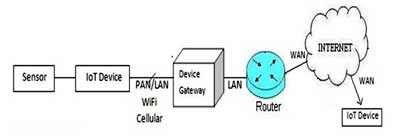
Wireless cellular companies are working towards providing connectivity and enhancement to existing wireless devices to support emerging IoT market.
Technically, the Internet of Things integrates multiple wired and wireless communication, control, and IT technologies, which connect various terminals or subsystems under a unified management platform that employs open and standardized data presentation technologies such as XML/web services/SOA. Its system functions include remote monitoring, automatic alarms, control, diagnosis, maintenance, global device management, and integrated, intelligent information services for users.
Career &Skills required for IoT Industry
 The Internet of Things is one of the most revolutionary technology trends of our lifetime and it’s poised to explode. These skill sets will maximize your salary and marketability in the proliferating Internet of Things.
The Internet of Things is one of the most revolutionary technology trends of our lifetime and it’s poised to explode. These skill sets will maximize your salary and marketability in the proliferating Internet of Things.
IoT is a mix of Business Intelligence, Information Security, UI / UX Design, Mobile Development, Hardware Engineering, Networking.
To become engineers in these domains there are a ton of languages, tools out there which will help you to be proficient in these.Some of them are hadoop, NoSQL, big data, c, java, html, xml, css, javascript, embedded technologies, mobile apps development(android, ios, hybrid tools) network protocols etc.
MNC’s like Google, Cisco, Intel, GE, Philips, IBM are in very much need of IoT developers who will provide you the highest perks when compared to other developers in the market and not to mention other companies and startups.
As you know IoT is growing in a rapid pace, there’s a lot of vaccum space available in the IoT market as developers, entrepreneur’s and much more. According to a recent survey there is a minimum need of 4.5Million developers by 2020, but right now they are only close to 1 Million developers in the industry.If you get expertise in any of the above domains then the IoT world welcomes you with the red carpet.
Govt Support for IoT
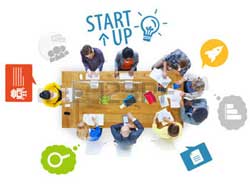 After becoming the President of the United States at the beginning of 2009, Barack Obama enthusiastically responded to IBM's "Smart Planet" concept, positing new energies and the Internet of Things as the two major weapons for economic revitalization. Various countries subsequently developed their Internet of Things strategies in less than a year, including i-Japan Plan, Sensing China, and the EU's Action Plan on the Internet of Things.
After becoming the President of the United States at the beginning of 2009, Barack Obama enthusiastically responded to IBM's "Smart Planet" concept, positing new energies and the Internet of Things as the two major weapons for economic revitalization. Various countries subsequently developed their Internet of Things strategies in less than a year, including i-Japan Plan, Sensing China, and the EU's Action Plan on the Internet of Things.
In our country, government of India has initiated many plans for the IoT industry, there were lot of schemes and incubation centers and startup spaces which were evolved around the IoT industry.
Hypercat is one type of start-up space offered for IoTdeveopers by Flexeye Company in Hyderabad, and there are many IoT startup spaces by the state governments which give subsidiaries interms of SEZ, initial funding, tax exemptions and also there are lot more incubation centers which are backed up by the renowned Universities with some office space.
Companies and Projects
 In the smart home area, for example, Samsung acquired early market leader SmartThings. Meanwhile, Apple acquired HomeKit and Google recently bought Nest. In Wearables there's Apple's HealthKit, Google Fit and Samsung's S Health—not to mention Android Wear, Samsung Gear and the forthcoming Apple Watch. On the retail side, Apple is busy with iBeacons and Apple Pay, while in the connected car space, Google has Android Auto and Apple has its CarPlay system.
In the smart home area, for example, Samsung acquired early market leader SmartThings. Meanwhile, Apple acquired HomeKit and Google recently bought Nest. In Wearables there's Apple's HealthKit, Google Fit and Samsung's S Health—not to mention Android Wear, Samsung Gear and the forthcoming Apple Watch. On the retail side, Apple is busy with iBeacons and Apple Pay, while in the connected car space, Google has Android Auto and Apple has its CarPlay system.
Google has closed the books on its 3.2billionpurchaseofNestLabs.CiscoSystemssaysitintendstoacquireJasperTechnologies,developerofacloud−basedserverplatformfortheInternetofThings,for1.4 billion in cash and other incentives.
Intel to acquire Lantiq Advancing Connected Home.
The above mentioned companies are very small in range which were acquired by the giants in the industry because they knew the potential of IoT.
If you want to stay with your company then you can attract venture capitalists for funding and then go ahead with your work.
Fitbit is one among them which got initial funding from Qualcomm and now Fitbit is a 4.1 billion dollar company after IPO.
 An IoT conference was held in Bangalore where some of the IoT startup companies attended sharing their ideas like controlling the gas stove flame, analyzing design patterns for car driving and one of them created a platform and IDE for developing the IoT products. Karthee Madasamy, Managing Director, Qualcomm Ventures India shared a few things about Fitbit and venture capital investments. He said “You get a great insight not by the first level of analysis, but rather from multiple levels of them. Conviction is not stubbornness but rather depth, going down to the tenth level to prove to yourself a point.”
An IoT conference was held in Bangalore where some of the IoT startup companies attended sharing their ideas like controlling the gas stove flame, analyzing design patterns for car driving and one of them created a platform and IDE for developing the IoT products. Karthee Madasamy, Managing Director, Qualcomm Ventures India shared a few things about Fitbit and venture capital investments. He said “You get a great insight not by the first level of analysis, but rather from multiple levels of them. Conviction is not stubbornness but rather depth, going down to the tenth level to prove to yourself a point.”
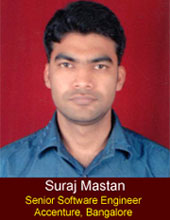 An IoT startup from Goa (The founder do not wish to reveal the name of the company because of a non-disclosure agreement) who make IoT devices for smart homes like speeding up the fan, dimming the light bulbs and many more, received a pre-order of 30cr before the actual launch of the product.
An IoT startup from Goa (The founder do not wish to reveal the name of the company because of a non-disclosure agreement) who make IoT devices for smart homes like speeding up the fan, dimming the light bulbs and many more, received a pre-order of 30cr before the actual launch of the product.
So guys don’t be a couch potato, getup and explore the world of IoT, as it is an ocean of opportunities, go and grab your chance to make your name in the hall of fame.
Technically, the Internet of Things integrates multiple wired and wireless communication, control, and IT technologies, which connect various terminals or subsystems under a unified management platform that employs open and standardized data presentation technologies such as XML/web services/SOA. Its system functions include remote monitoring, automatic alarms, control, diagnosis, maintenance, global device management, and integrated, intelligent information services for users.
Career &Skills required for IoT Industry
 The Internet of Things is one of the most revolutionary technology trends of our lifetime and it’s poised to explode. These skill sets will maximize your salary and marketability in the proliferating Internet of Things.
The Internet of Things is one of the most revolutionary technology trends of our lifetime and it’s poised to explode. These skill sets will maximize your salary and marketability in the proliferating Internet of Things.IoT is a mix of Business Intelligence, Information Security, UI / UX Design, Mobile Development, Hardware Engineering, Networking.
To become engineers in these domains there are a ton of languages, tools out there which will help you to be proficient in these.Some of them are hadoop, NoSQL, big data, c, java, html, xml, css, javascript, embedded technologies, mobile apps development(android, ios, hybrid tools) network protocols etc.
MNC’s like Google, Cisco, Intel, GE, Philips, IBM are in very much need of IoT developers who will provide you the highest perks when compared to other developers in the market and not to mention other companies and startups.
As you know IoT is growing in a rapid pace, there’s a lot of vaccum space available in the IoT market as developers, entrepreneur’s and much more. According to a recent survey there is a minimum need of 4.5Million developers by 2020, but right now they are only close to 1 Million developers in the industry.If you get expertise in any of the above domains then the IoT world welcomes you with the red carpet.
Govt Support for IoT
 After becoming the President of the United States at the beginning of 2009, Barack Obama enthusiastically responded to IBM's "Smart Planet" concept, positing new energies and the Internet of Things as the two major weapons for economic revitalization. Various countries subsequently developed their Internet of Things strategies in less than a year, including i-Japan Plan, Sensing China, and the EU's Action Plan on the Internet of Things.
After becoming the President of the United States at the beginning of 2009, Barack Obama enthusiastically responded to IBM's "Smart Planet" concept, positing new energies and the Internet of Things as the two major weapons for economic revitalization. Various countries subsequently developed their Internet of Things strategies in less than a year, including i-Japan Plan, Sensing China, and the EU's Action Plan on the Internet of Things.In our country, government of India has initiated many plans for the IoT industry, there were lot of schemes and incubation centers and startup spaces which were evolved around the IoT industry.
Hypercat is one type of start-up space offered for IoTdeveopers by Flexeye Company in Hyderabad, and there are many IoT startup spaces by the state governments which give subsidiaries interms of SEZ, initial funding, tax exemptions and also there are lot more incubation centers which are backed up by the renowned Universities with some office space.
Companies and Projects
 In the smart home area, for example, Samsung acquired early market leader SmartThings. Meanwhile, Apple acquired HomeKit and Google recently bought Nest. In Wearables there's Apple's HealthKit, Google Fit and Samsung's S Health—not to mention Android Wear, Samsung Gear and the forthcoming Apple Watch. On the retail side, Apple is busy with iBeacons and Apple Pay, while in the connected car space, Google has Android Auto and Apple has its CarPlay system.
In the smart home area, for example, Samsung acquired early market leader SmartThings. Meanwhile, Apple acquired HomeKit and Google recently bought Nest. In Wearables there's Apple's HealthKit, Google Fit and Samsung's S Health—not to mention Android Wear, Samsung Gear and the forthcoming Apple Watch. On the retail side, Apple is busy with iBeacons and Apple Pay, while in the connected car space, Google has Android Auto and Apple has its CarPlay system.Google has closed the books on its 3.2billionpurchaseofNestLabs.CiscoSystemssaysitintendstoacquireJasperTechnologies,developerofacloud−basedserverplatformfortheInternetofThings,for1.4 billion in cash and other incentives.
Intel to acquire Lantiq Advancing Connected Home.
The above mentioned companies are very small in range which were acquired by the giants in the industry because they knew the potential of IoT.
If you want to stay with your company then you can attract venture capitalists for funding and then go ahead with your work.
Fitbit is one among them which got initial funding from Qualcomm and now Fitbit is a 4.1 billion dollar company after IPO.
 An IoT conference was held in Bangalore where some of the IoT startup companies attended sharing their ideas like controlling the gas stove flame, analyzing design patterns for car driving and one of them created a platform and IDE for developing the IoT products. Karthee Madasamy, Managing Director, Qualcomm Ventures India shared a few things about Fitbit and venture capital investments. He said “You get a great insight not by the first level of analysis, but rather from multiple levels of them. Conviction is not stubbornness but rather depth, going down to the tenth level to prove to yourself a point.”
An IoT conference was held in Bangalore where some of the IoT startup companies attended sharing their ideas like controlling the gas stove flame, analyzing design patterns for car driving and one of them created a platform and IDE for developing the IoT products. Karthee Madasamy, Managing Director, Qualcomm Ventures India shared a few things about Fitbit and venture capital investments. He said “You get a great insight not by the first level of analysis, but rather from multiple levels of them. Conviction is not stubbornness but rather depth, going down to the tenth level to prove to yourself a point.” An IoT startup from Goa (The founder do not wish to reveal the name of the company because of a non-disclosure agreement) who make IoT devices for smart homes like speeding up the fan, dimming the light bulbs and many more, received a pre-order of 30cr before the actual launch of the product.
An IoT startup from Goa (The founder do not wish to reveal the name of the company because of a non-disclosure agreement) who make IoT devices for smart homes like speeding up the fan, dimming the light bulbs and many more, received a pre-order of 30cr before the actual launch of the product.So guys don’t be a couch potato, getup and explore the world of IoT, as it is an ocean of opportunities, go and grab your chance to make your name in the hall of fame.
Published date : 25 Feb 2016 05:41PM



















